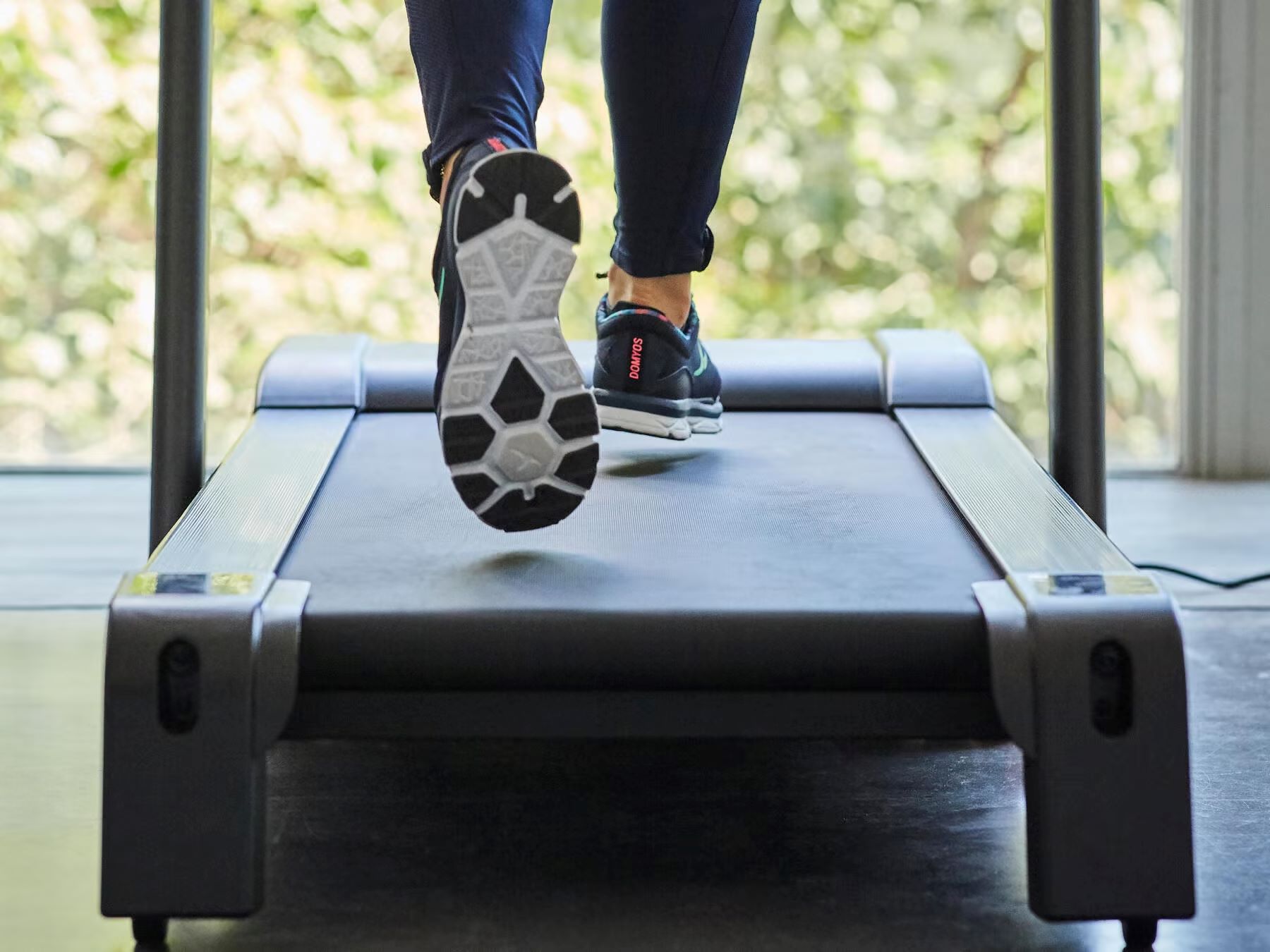

Featured
What Is Moderate Running Pace
Published: October 5, 2023
Discover the benefits and importance of maintaining a moderate running pace. Find out how to improve your endurance with our featured tips and techniques.
Introduction
Welcome to the world of running! Whether you’re a seasoned runner or just starting out on your fitness journey, understanding the concept of a moderate running pace is essential to maximizing your performance and achieving your goals.
Running at a moderate pace is a key component of any well-rounded training program. It falls between a leisurely jog and an all-out sprint, providing numerous benefits to both your physical and mental well-being. In this article, we will explore what exactly a moderate running pace is, the advantages it offers, how to determine your own moderate pace, and some valuable training tips to help you make the most of this running style.
Running at a moderate pace allows your body to work aerobically, meaning your muscles are supplied with ample oxygen to perform efficiently. This aids in building endurance and burning calories, making it an ideal choice for those aiming to lose weight or improve cardiovascular fitness. Moderate-paced runs also provide a workout for your heart, strengthening it and reducing the risk of heart disease.
Beyond the physical benefits, running at a moderate pace has numerous mental advantages. It allows you to enter a state of flow, where your mind can relax and your thoughts can roam freely. This can lead to increased creativity, reduced stress levels, and improved overall mental well-being.
Now that we understand the benefits of running at a moderate pace, let’s delve into how to determine your own personal moderate running pace. It’s important to note that everyone’s definition of “moderate” can vary based on their fitness level, age, and individual goals.
Benefits of Moderate Running Pace
Running at a moderate pace offers a wide range of benefits for both your physical and mental well-being. Let’s take a closer look at some of the key advantages of incorporating moderate-paced runs into your training routine:
- Improved Cardiovascular Fitness: Running at a moderate pace challenges your cardiovascular system, increasing your heart rate and improving its efficiency. This helps to strengthen your heart muscles and enhances your overall cardiovascular fitness.
- Endurance Building: Moderate-paced runs are an excellent way to build endurance. By consistently running at a moderate speed, you train your body to sustain a steady pace for longer durations, allowing you to cover greater distances and improve your stamina.
- Weight Loss and Calorie Burning: Running at a moderate pace is a great way to burn calories and aid in weight loss. Since your body can sustain the effort for a longer duration, it relies on stored fat as a source of energy, helping to shed excess pounds.
- Reduced Risk of Cardiovascular Disease: Regularly engaging in moderate-paced runs helps to lower blood pressure, reduce LDL (bad) cholesterol levels, and decrease the risk of developing cardiovascular diseases such as heart disease or stroke.
- Mental Well-being: Moderate-paced runs provide an opportunity for your mind to relax and enter a state of flow. This can have a positive impact on your mood, reduce stress levels, improve cognitive function, and boost overall mental well-being.
- Muscle Strengthening: Running at a moderate pace engages various muscles throughout your body, including your legs, core, and upper body. Over time, this leads to improved muscle strength and tone, enhancing your overall physical fitness.
With all these incredible benefits, it’s easy to see why incorporating moderate-paced runs into your training regimen is a smart and rewarding choice. Let’s now explore how you can determine your personal moderate running pace.
How to Determine Your Moderate Running Pace
Determining your moderate running pace is essential to ensure that you’re challenging yourself adequately during your runs without pushing too hard. Here are some methods you can use to find your ideal moderate pace:
- Perceived Exertion: One simple way to determine your moderate running pace is to rely on your perceived exertion. On a scale of 1 to 10, with 1 being the easiest effort and 10 being maximum effort, aim for a perceived exertion level of around 5-6 during your moderate runs. This means you should feel like you’re working, but still able to maintain a conversation.
- Heart Rate Monitoring: Using a heart rate monitor can provide a more objective measurement of your effort level. Your moderate running pace typically falls within 50-70% of your maximum heart rate. To calculate your maximum heart rate, subtract your age from 220. With this information, you can set a target heart rate range to stay within during your moderate runs.
- Pace and Talk Test: The “talk test” is another effective method to determine your moderate running pace. During your runs, you should be able to speak in full sentences without gasping for breath. If you can only say a few words at a time, you may be running too hard. If you can sing or carry on an extended conversation, you may need to pick up the pace.
- Previous Race Times: If you’ve participated in races or timed runs in the past, you can use those results as a reference point. Look at your average pace during those events and aim to run at a slightly slower pace for your moderate runs. This allows you to train at a sustainable intensity without pushing yourself to the limit.
- GPS and Running Apps: Utilizing GPS devices or running apps can provide valuable real-time data on your pace during your runs. Set your desired pace range for your moderate runs, and let the technology alert you if you’re going too fast or too slow. This can help you maintain a consistent moderate pace throughout your workouts.
Experiment with these methods and find the one that works best for you. Remember, your moderate running pace should feel challenging yet sustainable for the duration of your run. With your moderate pace determined, it’s time to explore some training tips to help you make the most of your runs.
Training Tips for Moderate Running Pace
Now that you have determined your moderate running pace, it’s important to incorporate effective training strategies to maximize the benefits of this running style. Here are some valuable tips to keep in mind when training at a moderate pace:
- Gradual Progression: When incorporating moderate-paced runs into your training routine, it’s crucial to start slowly and gradually increase your mileage and intensity. This allows your body to adapt and reduces the risk of overuse injuries.
- Variety in Terrain: Mix up your running routes to include different terrains such as hills, trails, or tracks. This not only adds variety but also challenges your muscles in different ways, enhancing your overall fitness and strength.
- Interval Training: To further enhance your endurance and fitness, incorporate intervals into your moderate-paced runs. Alternate between periods of higher intensity, such as a faster pace or hill sprints, and periods of recovery at your moderate pace.
- Strength Training: Supplement your running with strength training exercises to improve muscle strength and prevent imbalances. Focus on exercises that target your legs, core, and upper body for a well-rounded fitness routine.
- Proper Recovery: Allow your body sufficient time to recover between moderate-paced runs. Rest days and active recovery activities such as stretching, foam rolling, or yoga can help to prevent injuries and promote optimal performance.
- Listen to Your Body: Pay attention to how your body feels during and after your moderate runs. If you’re feeling fatigued or experiencing pain, take a step back and modify your training as needed. It’s important to strike a balance between pushing yourself and avoiding overexertion.
- Consistency is Key: Consistency is essential for reaping the benefits of moderate-paced runs. Aim for regular training sessions, gradually increasing your weekly mileage and maintaining a consistent moderate pace to see progress over time.
Remember, every runner is unique, so feel free to tailor these tips to fit your individual needs and preferences. By incorporating these strategies into your training routine, you’ll be well on your way to achieving your running goals and reaping the rewards of running at a moderate pace.
Common Mistakes to Avoid
When it comes to running at a moderate pace, there are some common mistakes that runners often make. By being aware of these mistakes, you can avoid them and optimize your training. Here are some common pitfalls to watch out for:
- Starting Too Fast: One of the most common mistakes is starting your moderate-paced run too fast. It can be tempting to go all out, but this can quickly lead to burnout or exhaustion. Remember to start at a comfortable pace and gradually build up your speed.
- Neglecting Recovery: Recovery is crucial in any training program. Failing to incorporate rest days or neglecting recovery activities can increase the risk of injuries and hinder your progress. Make sure to schedule regular rest days and prioritize recovery methods such as stretching, foam rolling, and proper sleep.
- Ignoring Proper Nutrition: Nutrition plays a vital role in fueling your runs and aiding in recovery. Avoid the mistake of neglecting your diet or relying on unhealthy or inadequate food choices. Opt for a well-balanced diet that includes carbohydrates for energy, protein for muscle repair, and healthy fats for overall health.
- Neglecting Strength Training: Building strength through cross-training exercises is essential for injury prevention and improved running performance. Neglecting strength training can lead to muscular imbalances and potential injuries. Include regular strength training sessions in your routine to strengthen your muscles and improve overall running efficiency.
- Ignoring proper hydration: Dehydration can lead to decreased performance and increase the risk of cramps or heat-related illnesses. It’s important to stay properly hydrated before, during, and after your runs. Carry a water bottle with you or plan your routes near water fountains to ensure you remain hydrated throughout your training.
- Overtraining: Pushing yourself too hard without giving your body enough time to recover can lead to overtraining. Overtraining can result in fatigue, decreased performance, and increased risk of injury. Listen to your body’s signals and take rest days or lighter training days when needed.
- Ignoring Proper Form: Running with incorrect form can lead to inefficient movement patterns and increase the risk of injury. Pay attention to your posture, arm swing, and foot strike during your runs. If you’re unsure about your form, consider working with a running coach to ensure proper technique.
By being mindful of these common mistakes and making the necessary adjustments to your training routine, you can minimize the risk of setbacks and make the most of your moderate-paced runs.
Conclusion
Incorporating moderate-paced runs into your training routine can yield numerous benefits for both your physical and mental well-being. By understanding what constitutes a moderate running pace and learning how to determine your own, you can experience improved cardiovascular fitness, endurance, weight loss, and mental well-being.
Remember to utilize methods such as perceived exertion, heart rate monitoring, and the talk test to find your ideal moderate pace. From there, implement training strategies like gradual progression, variety in terrain, strength training, and proper recovery. Avoid the common mistakes of starting too fast, neglecting recovery and nutrition, forgetting about strength training, and ignoring proper hydration and form.
Consistency is key when it comes to reaping the rewards of moderate-paced runs. By staying committed, listening to your body, and making adjustments as necessary, you can make significant progress in your running journey.
So, lace up your running shoes, find your moderate pace, and hit the road with confidence. Enjoy the many physical and mental benefits that come with running at a moderate pace, and watch as your fitness and overall well-being soar to new heights.









